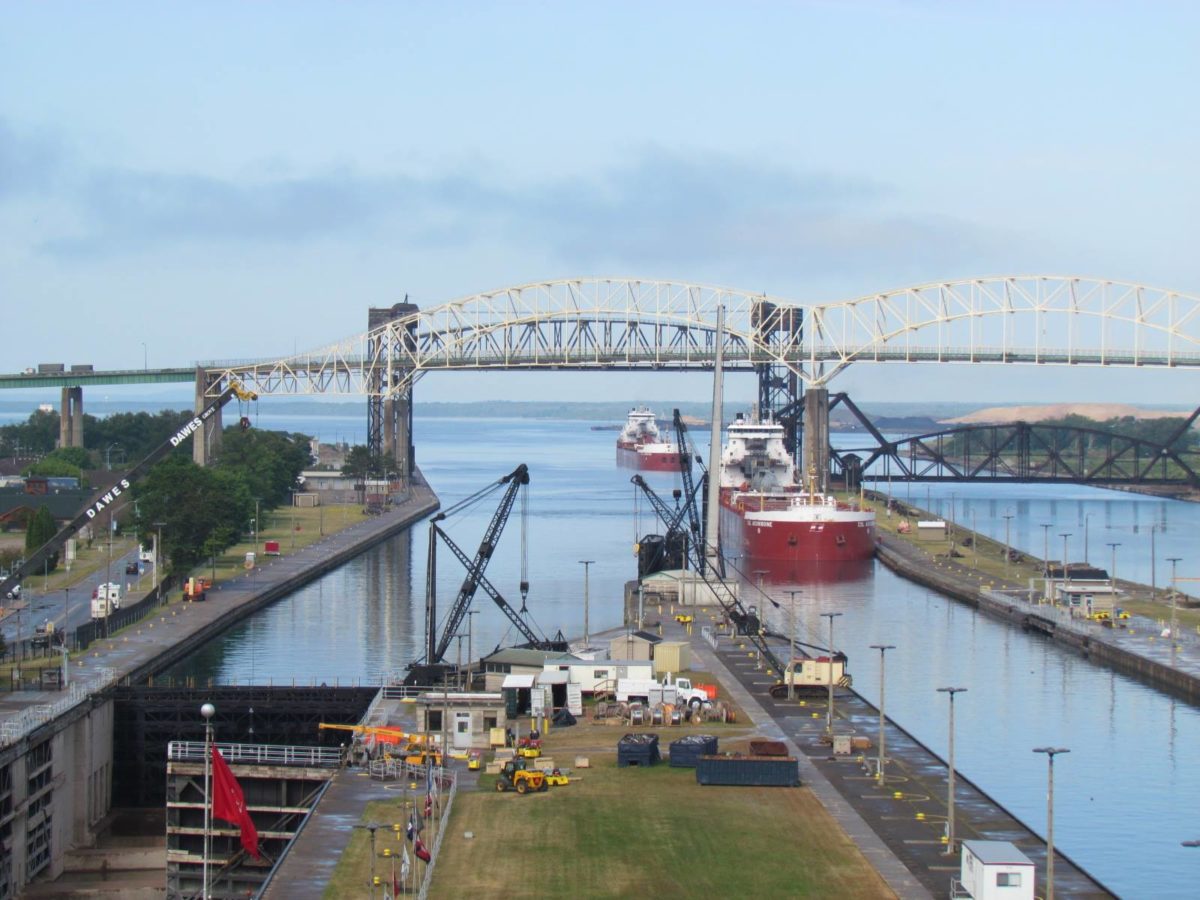Soo Locks. Photo: U.S. Army Corps. of Engineers
The Business of Shipping is new column from Ira Breskin, senior lecturer at SUNY Maritime College in the Bronx, NY and author of The Business of Shipping (9th edition), North America’s most comprehensive industry-focused book explaining and analyzing marine transportation and related industries, both domestic and international.
By Ira Breskin
 After 30-years, the long wait finally is over. In a move that largely flew under the industry’s radar, Washington recently committed to help fund the expansion/renovation of the locks at Sault Ste. Marie, MI, a vital link in the nation’s supply chain.
After 30-years, the long wait finally is over. In a move that largely flew under the industry’s radar, Washington recently committed to help fund the expansion/renovation of the locks at Sault Ste. Marie, MI, a vital link in the nation’s supply chain.
The original push for this Soo Locks upgrade dates back to 1986. The Water Resources Development Act of 2018 included initial project funding.
Completion of the long-term project will ensure that the largest Great Lake freighters can safely and efficiently continue to travel between Lake Superior and the other Great Lakes. Among the biggest beneficiaries will most of the nation’s steel producers that are located east of the Soo Locks. Those mills rely on the downbound sea transport of taconite, the essential raw material mined on the Mesabi Range in northern Minnesota.
The Soo Locks are “one of the most critical pieces of American infrastructure,” said Jim Weakley, president of the Lake Carriers’ Association, which represents the major Soo Locks users.
There is no charge for carriers to use the locks. However, the government offset the cost of lock maintenance when collecting a tax on fuel used by inland carriers.
Washington’s commitment to fund the replacement/expansion (in terms of length and depth) of the Davis/Sabin locks provides badly needed alternative transit for 1,200 ft. LOA freighters should the Poe Lock shutdown. It is the lone US locks, of the trio operating, that can accommodate the biggest lakers negotiating the 21 change in water elevation.
The Poe Lock, built in 1896 and expanded in 1968, handles about 90 percent of the cargo transiting the Soo locks. The sister Sabin Lock is shutdown, Davis is used infrequently and the MacArthur handles only smaller vessels.
Congressional passage of WRDA in late fall, and President Trump subsequently signing the legislation, won high praise from the Lake Carrier’s Association. WRDA include a $922 million authorization for the new 1,200 foot-lock.
“The locks are the backbone of (the) American steel industry, power generation, construction and essential for international trade with American’s heartland.,” said Mark Pietrocarlo, Lake Carriers’ Association chairman.
Subsequent to WRDA’s passage, the Army Corps of Engineers, which maintains the Soo Locks, announced that it will spend $32 million in 2019 for design of the revamped Soo Locks and initial construction. Michigan also is kicking in an additional $52 million.
Project construction is scheduled to take place over the next decade. Additional annual Congressional appropriations will be required to complete the highly anticipated project.
Ira Breskin, a senior lecturer at SUNY Maritime College in the Bronx, NY, is author of The Business of Shipping (9th edition).

 Join The Club
Join The Club




 After 30-years, the long wait finally is over. In a move that largely flew under the industry’s radar, Washington recently
After 30-years, the long wait finally is over. In a move that largely flew under the industry’s radar, Washington recently 






